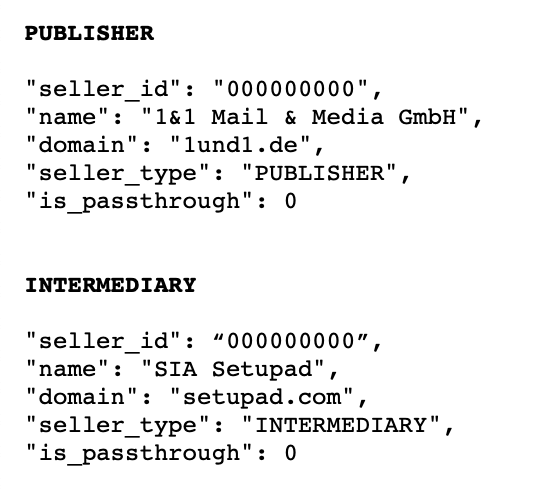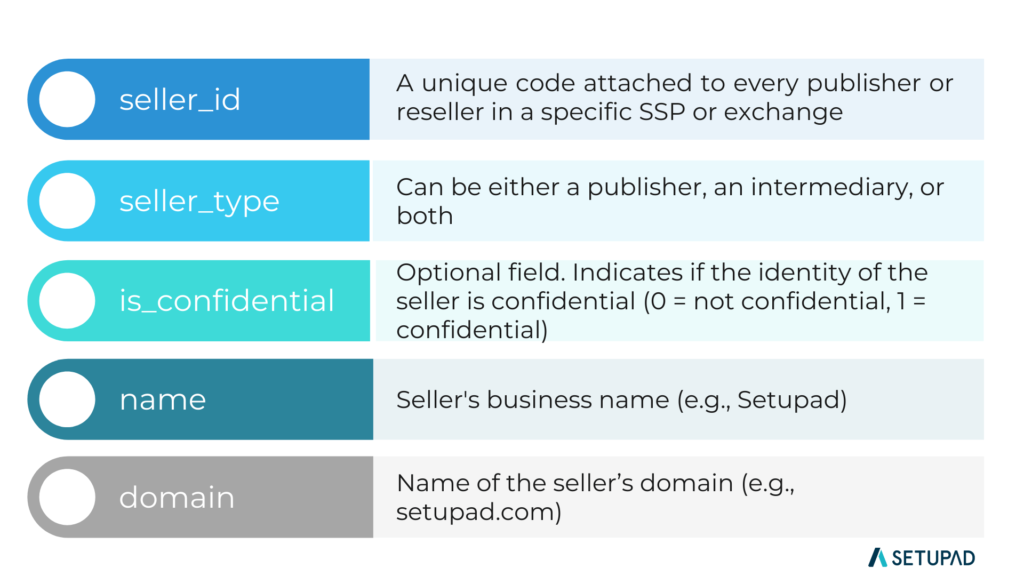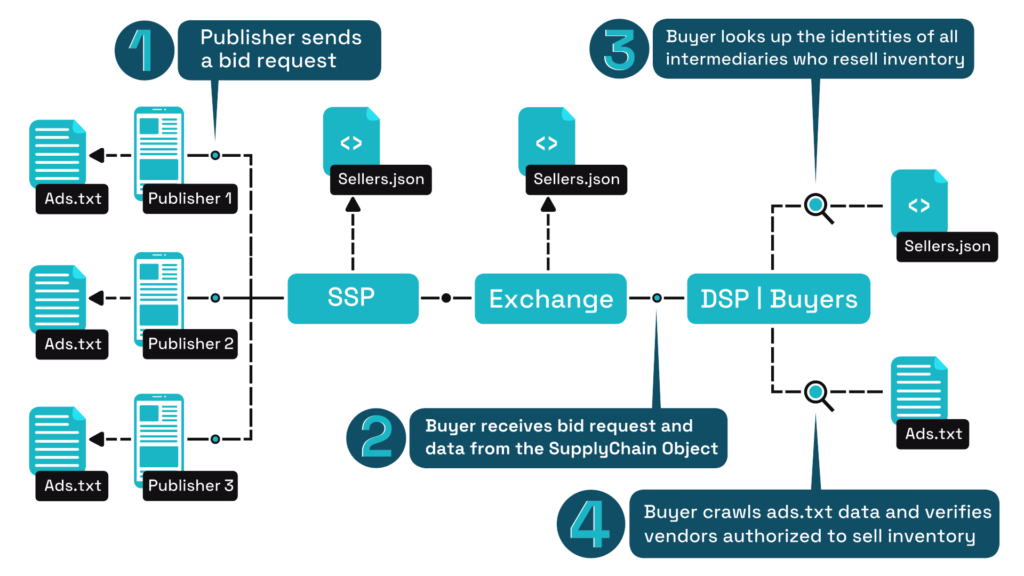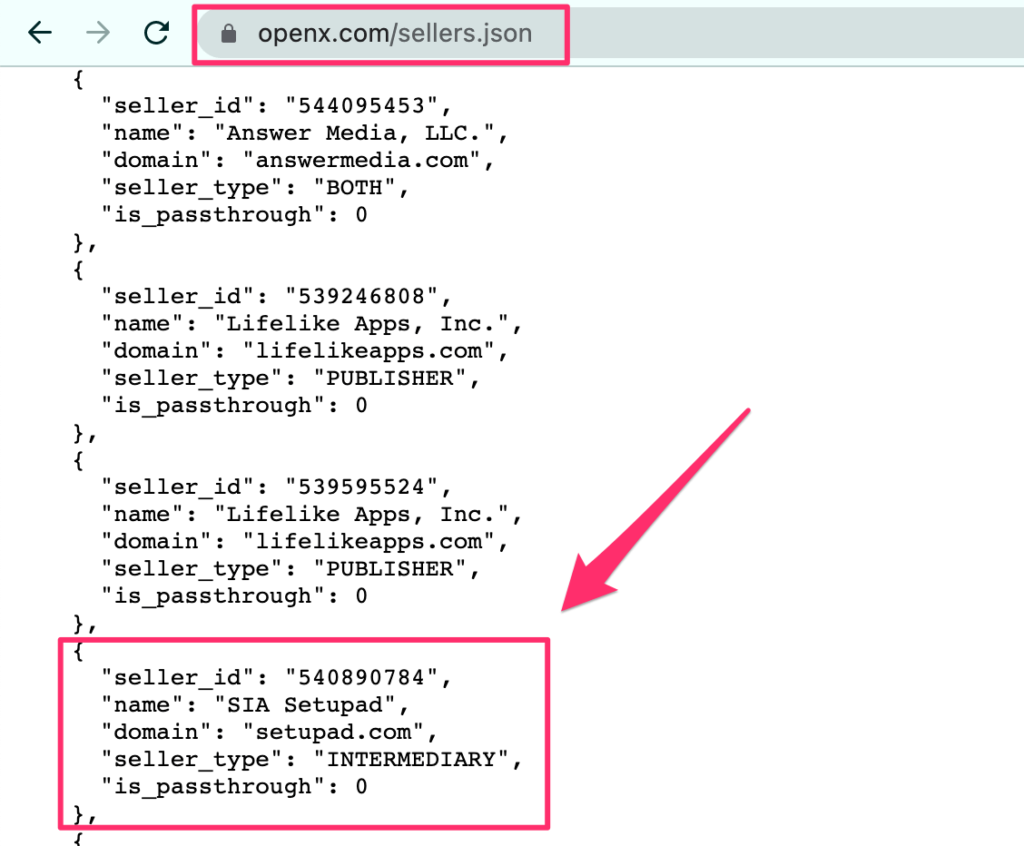Sellers.json File Explained
Sellers.json file was introduced in 2019 by the IAB Tech Lab, following another important industry initiative–ads.txt.
Essentially, sellers.json is designed to provide full transparency about buyers, sellers, and resellers of the programmatic auction and prevent ad fraud.
This article covers key features of sellers.json and its extension–SupplyChain Object, as well as the difference between sellers.json and ads.txt file, and the benefits for publishers and advertisers.
What is Sellers.json?
Sellers.json is a file that contains the list of all authorized sellers and resellers of the publisher’s ad inventory, for example, SSPs or a monetization platform like Setupad. It’s a simple mechanism that allows buyers to verify who is authorized to sell publisher’s ad inventory.
What are the Differences Between Sellers.json and Ads.txt?
Ads.txt file allows publishers to declare sellers that are authorized to sell their ad inventory. Sellers.json provides advertisers with a mechanism to discover all parties (e.g., SSPs) involved in selling the publisher’s ad inventory. That includes intermediaries that don’t have a direct relationship with the publisher.

Essentially, sellers.json is the next step after ads.txt to increase the transparency of the programmatic supply chain.
Let’s picture a coin. For a long while, only one side of the coin was visible–the publishers’ side (ads.txt). Now, with sellers.json, you can see the other side as well—the sellers’ side (SSPs, intermediaries, and ad exchanges).
Sellers.json Example

The sellers.json file consists of the following fields:
- seller_id
- seller_type
- is_confidential
- name
- domain

How Does Sellers.json Work?
The Sellers.json file works as an identification card for all legal entities participating in the programmatic auction, including publishers’ and intermediaries’ identities, their names, domain names, and seller IDs.
However, some of these entities (publishers or intermediaries) may not disclose their identities or their business domains. Therefore, the sellers.json file doesn’t provide a full insight into the programmatic payment flow, which is what another important initiative–SupplyChain Object–aims to solve.
What is a SupplyChain Object?
SupplyChain Object, also known as OpenRTB SupplyChain Object, allows buyers to see all entities involved in the selling or reselling of ad inventory and who was paid for each bid request using information like the URL of the seller and the publisher ID. It’s complementary to the industry initiatives like sellers.json and ads.txt.
This information is encapsulated in a bid request and presents a series of nodes, where each node is an entity that is involved in a specific transaction.
Most importantly for buyers, they can match the nodes represented in the SupplyChain Object against the data in the sellers.json and ads.txt files and gain even more insight into the programmatic supply chain.

Source: Google
Sellers.json vs SupplyChain Object
Sellers.json shows advertisers the first 2 transactions in the supply chain. For example, you are a publisher creating quality content. You chose Setupad as your monetization partner to access top-notch header bidding wrapper technology and increase your ad revenue.
Setupad sells your ad inventory through one of our partner SSPs, for example, OpenX. Sellers.json might show that a demand-side platform (for example, MediaMath) paid a supply-side platform (OpenX) which paid Setupad. But who is the publisher? Or was there another party before the money reached the publisher?
This is where the SupplyChain Object comes in. It offers full visibility into the supply path from the inventory source to the buyer. When it works together with ads.txt and sellers.json, buyers can validate the final reseller in a bid request and verify that he is authorized to sell that publisher’s ad inventory.

Why is SupplyChain Object important?
In order to complete the supply chain, Google needs the seller ID of every Manage Inventory (MI) child publisher. Some advertisers have indicated that they will pause bidding on inventories that have incomplete supply chains (i.e., missing SupplyChain Object).
Where do I put my sellers.json?
You don’t need to worry about hosting the sellers.json file if you are a publisher. This is the responsibility of website monetization partners and ad exchanges, who need to add sellers.json files to their root domain and list all publishers or companies they work with.
What are the Benefits of Sellers.json?
Sellers.json is used by advertisers. Nevertheless, the adoption of this file greatly benefits both publishers and advertisers:
- Increased Transparency: Both publishers and advertisers have greater confidence in a transparent marketplace and optimized supply path.
- Reduced Ad Fraud: Sellers.json helps advertisers quickly spot fraudsters by revealing who is authorized to sell publishers’ ad inventory.
- Increased Ad Spend: By decreasing ad fraud losses, advertisers spend more money on ad spaces.
- Trust: Advertisers have an easy mechanism to verify the publishers’ identity and determine which business entity operates a given seller ID (sid), which helps to build long-term relationships.
Conclusion
The fight to prevent ad fraud is in the programmatic advertising industry’s best interest and requires equal action from all sides. That means publishers should consistently update their ads.txt files while intermediaries disclose their sellers.json file, respectively.
On the other hand, buyers should strengthen the supply chain and push poor-quality inventory from the marketplace by rejecting bid requests that are missing the SupplyChain Object.
Setupad and all our partners are fully compliant with sellers.json standards. If you have any questions, email us at [email protected].


